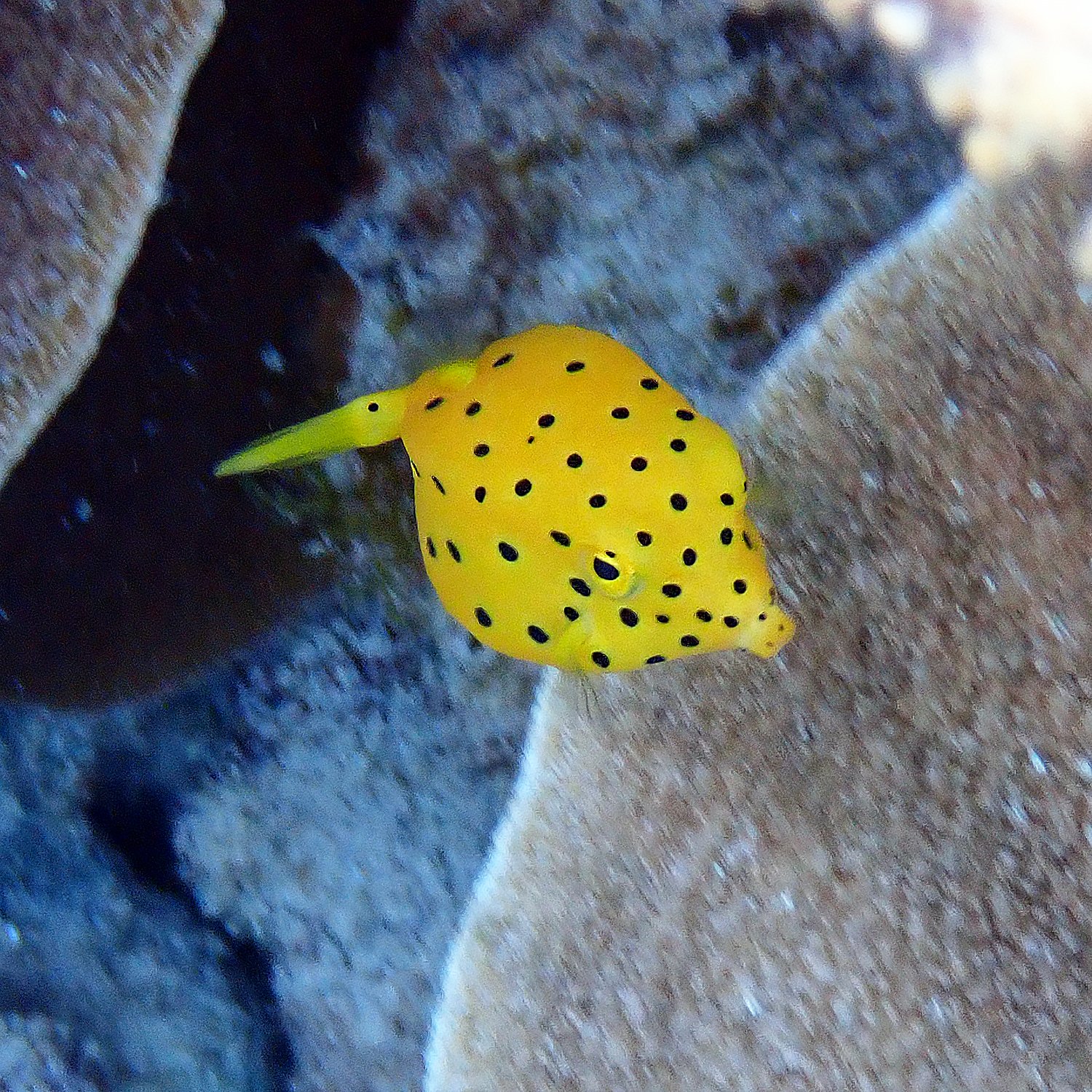If you’ve been following my lagoon wanderings on Facebook (Norfolk Island Time official), you’ll know I have a bit of a soft spot for one particularly adorable resident – Mr Lemonhead, the yellow boxfish (Ostracion cubicus). I first spotted this little guy in March 2024, when he (?) was not much bigger than a grape, and I’ve been keeping tabs on him ever since.
His vivid yellow jacket with black spots is a classic case of warning colouration (aposematism), signalling to would-be predators that he is not going to be very tasty. He secretes a toxic mucus – ostracitoxin – in a cloud of white slime when stressed. This can harm other fish in the vicinity, affecting their red blood cells and gills. He’s filling out now, and before long he’ll probably swap that brilliant yellow suit for something more grown-up as his colouration fades (see image at the end of this post), and maybe he’ll even head off to explore beyond the safety of the lagoon.
While it is tricky to judge the scale from the photos (below), Mr Lemonhead is about three times the size he was back in March 2024.
Mr Lemonhead, the yellow boxfish (Ostracion cubicus) 15 March 2024
Pucker up! 8 August 2025
Boxfish have a very particular look – think of a swimming dice with fins – thanks to their rigid, bony ‘box’ that protects them from all sorts of bother. The funny thing is, for such an awkward-looking creature, Mr Lemonhead can turn on a 5c piece (remember those?) and hover like he’s on invisible strings. All that manoeuvring is down to some pretty clever fin work.
Biomimicry – looking to nature’s designs, processes, and systems for inspiration
Back in the early 2000s, the design boffins at Mercedes Benz took one look at the yellow boxfish and thought, ‘Now that’s a shape for a car’. They imagined a perfect low-drag, high-efficiency design, and as a result, in 2005, they rolled out the Mercedes-Bionic – a car that was sleek, futuristic, and supposedly boxfish-smooth as it sped through the air. Only later did scientists discover the boxfish isn’t especially streamlined at all. Its nimbleness actually comes from being slightly unstable, with those fins constantly making micro-adjustments. So the car never made it to the showroom floor, but it did make people think differently about where good ideas can come from.
Mr Lemonhead is not the only reef local lending ideas to the wider world. Manta rays, for example, have inspired the shape and movement of experimental underwater vehicles. Instead of noisy propellers, these use gentle, sweeping fin strokes – quiet, efficient, and perfect for sneaking up on marine life with a camera. Then there’s the parrotfish, happily chomping away at coral all day. Its fused front teeth are so ridiculously tough that scientists have studied them to create ultra-hard materials for tools and even dental work. Imagine having teeth that could crunch rock and still look like you’ve just been to the dentist!
Blue-barred parrotfish (Scarus ghobban) with fused front teeth designed for scraping coral
Next time you’re drifting over the reef, remember – you’re floating above a treasure chest of design inspiration. From boxy little characters like Mr Lemonhead to the gliding giants and the coral crunchers, the lagoon is basically nature’s own R&D lab – and not just for design. Did you know, for example, that many reef animals have also gifted us chemicals for life-saving medicines? But that is a post for another day!
Mercedes-Benz bionic car at Metropolitan Museum of Modern Art: Design and the Elastic Mind, reprinted from Wikimedia under the Creative Commons Attribution-Share Alike 2.0 Generic license.
An adult yellow boxfish. Photo 539545043, (c) Max Carter, some rights reserved (CC BY-NC), uploaded by Max Carter (iNaturalist)



